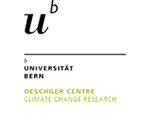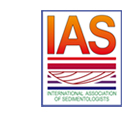Field Trip 4 - Deccan Traps
 |
Photos: Dr. Hetu Sheth |
Please note that this trip is fully booked
Description
One of the larger and better preserved continental flood basalt provinces of the world, the Deccan Traps cover an area of ~5 × 105 km2 and had an estimated original area of at least 1.5 × 106 km2. The Deccan Traps, whose eruptions overlapped with the K/T Boundary ~65 million years ago, have played a key role in major debates regarding mass extinctions and mantle plumes.
The scenic Western Ghats (Sahyadri) escarpment, paralleling the western coast of India, spectacularly exposes the Deccan lava pile. One of the best studied and thick sections of the Deccan Traps is the >1200 m section between Poladpur (near the coast, on the Konkan Plain) and Mahabaleshwar (a hill town in the Western Ghats, 1436 m above sea level). This section shows many ”compound” and ”simple” lava flows, interlayered with ”red bole” beds. The Mahabaleshwar plateau and Panchgini tableland ~20 km to the east are capped by extensive red ferricrete (laterite), tens of meters thick. Ferricrete is also extensively developed at the top of the Bamnoli Range east of the Koyna Reservoir, approachable from Satara town (~50 km south of Mahabaleshwar).
Itinerary
Day 1 (17th February)
Pick up participants at 9.00 AM at Mumbai domestic airport; travel to Mahabaleshwar via Mahad and Poladpur; observe compound and simple flows near Mahad; climb the Ambenali Ghat section with field stops; possibly visit Arthur’s Seat viewpoint (depending on light); check-in to hotel; night stay at Mahabaleshwar.
Day 2 (18th February)
In the forenoon, visit Wilson (Sunrise) Point and then Panchgini tableland for a close look at the ferricrete blanket and scenic vistas of the lava flows and typical trappean landscape; possibly visit Tapola (time permitting) for a short boat ride on the Koyna Lake (known for reservoir-induced seismicity). In the afternoon, visit Arthur’s Seat outside Mahabaleshwar. Located on the edge of the Western Ghats escarpment, this viewpoint offers fantastic views of the deeply scalloped and gullied escarpment with its >1 km thick lava sequence (photos above). Night stay at Mahabaleshwar.
Day 3 (19th February)
In the forenoon, travel to Satara and then westwards to villages at the top of the Bamnoli Range for a close look at the ferricrete and features of geomorphological interest. By noon, depart Satara for Pune and Lonavla; visit Karla Buddhist Caves near Lonavla (time permitting); head directly for Mumbai; arrive and drop off participants at airport by ~6 PM.
Logistics
This is a 3-day field trip. All participants for this field trip should fly to Mumbai in the early morning of 17th February 2013 (or on 16th February evening who wish to stay at Mumbai). The recommended flights from Goa to Mumbai in the morning are: Air India (6:45 AM), GoAir (6:50 AM), Jet Airways (7:10 AM). It takes approx. 1 hour from Goa to Mumbai by flight.
The field trip is inclusive of two nights accommodation at Mahabaleshwar, transportation (Mumbai-Mahabaleshwar-Mumbai and internal travel), all meals and refreshments, and reference/reading material.
Field guides: Profs. Kanchan Pande and Hetu Sheth, Department of Earth Sciences, Indian Institute of Technology Bombay (IITB) will lead the field trip. Both have spent many years studying the Deccan Traps (see www.geos.iitb.ac.in/faculty.html).
Transportation: Air-conditioned SUVs or vans will be arranged for the field trips.
Requirements: Suitable for people with all fitness levels. Some walking (but minimal climbing) is expected.
Climate: Day temperatures are expected to be around 15-20oC and night temperatures ~10oC; warm clothing is recommended. Note that the Mumbai-Mahabaleshwar travel time by jeep or bus is 5-6 hours each way (not counting breaks for refreshments/lunch on the way).















